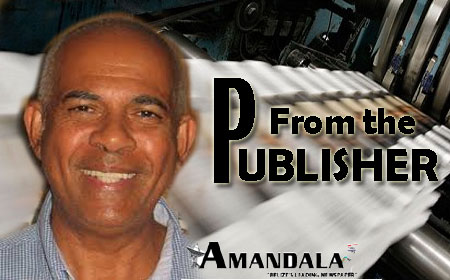Beyond the Indian town of San Juan Sacatepequez north of Guatemala City, there are only occasional huts along the nearly deserted road, and the hilly countryside is vast and bare. Then, around a turn in the road, one comes upon the imposing entrance gate and modern buildings of the Escuela Politecnica, the national military academy of Guatemala, standing alone in isolated terrain.
The central academic campus is dominated by the modern seven-story glass-and-concrete headquarters, whose height and radical design shock the eye in this country setting. The tower’s huge top-floor windows look out across the many buildings and fields of the 400-acre inner campus to the far reaches of artillery ranges, war-game areas, and places for every kind of training exercise. Clad in khaki shirts and trousers, their boots highly polished, their heads close-cropped, los caballeros cadetes (the young cadets) of the Politecnica go about the business of becoming officers and gentlemen.
Within its gates, the academy undertakes the selection, socialization, and professionalization of the country’s military officers, preparing them to join a closely knit corps whose members hold significant positions of power at all levels in Guatemala’s government. Eight of the ten national chief executives since 1954 have been commissioned army officers, graduates of the academy. Five served at some stage in their military careers as directors of the Escuela Politecnica. Of the two civilian presidents in the last three decades, Mendez Montenegro (1966-70) served on sufferance of the alto mando (armed forces high command), the council of most powerful military commanders, and Marco Vinicio Cerezo Arevalo – elected at the end of 1985 – was peacefully inaugurated in January 1986 only under military sanction and agreement about a continuing position in Guatemalan affairs acceptable to the military.
The virtual monopoly of the academy in the preparation of officers and the central position of the officer corps in the Guatemalan structure of power mean that in many ways the Politecnica is the most consequential elite-forming institution in the nation.
– THE GUATEMALAN MILITARY AND THE ESCUELA POLITECNICA, Franklin Patterson, 1988
I’ve asked a senior member of the newspaper’s staff to help me begin research into a sensational incident which took place on the Hummingbird Highway in early 1998. Through this medium, I am also now requesting that you readers help us in this research. Now that our neighbors in the west and south are forcing Belize to militarize our society and to become conscious of matters military on a daily basis, it seems to me that the Hummingbird Highway incident of 1998 may have seen Belize’s first military casualty/martyr in the framework of Guatemalan aggression.
One Saturday morning, and I believe it was a holiday weekend of some kind, armed Guatemalan(?) bandits locked off a section of the Hummingbird Highway which they had chosen with strategic precision. Every vehicle which entered that section of the highway was held up and its occupants systematically robbed of money, jewelry, phones, and all valuables. (Cell phones already existed in Belize, though they were not as common as they are today.) The bandits, and they displayed a substantial amount of military training and discipline, controlled that area for an hour and a half to two hours, if I remember correctly. Everything coming south from the direction of Belmopan and moving north from the direction of Dangriga and Punta Gorda was gobbled up inside this militarily controlled piece of highway.
One reason I remembered this incident recently is because there was one significant casualty. He was a Belize Defence Force (BDF) soldier traveling on a bus coming up, I believe, from Punta Gorda. I believe he was a Maya from one of the villages of Toledo. I would like to know what were the circumstances surrounding his murder, whether he was resisting the aggression in some way, and exactly why the hijackers chose him for execution.
Belizeans were stunned by the brazenness of this incident, and the fact that it exposed how totally incompetent, disorganized, and unprepared our security system was in this nation-state. It was never explained to us how, most importantly, these terrorist bandits could have gotten back across the Guatemalan border in the west, because presumably they drove north to Belmopan and then west to Benque after their crimes. There were many, many questions to be answered about this incident, and no one was talking. No one ever talked.
Amongst the prominent Belizeans caught in that Hummingbird Highway trap was a United Democratic Party (UDP) Cabinet Minister, the late Chiste Garcia of Dangriga, and the citrus magnate, Denzil Jenkins, of the Pomona Valley. To repeat, no victim ever told his or her story to the Belizean media, which was still relatively small at that time. No Security Ministry official ever held a press conference on the matter. Today, more than ever, we need to know what happened on the Hummingbird that Saturday morning, and it is for sure the Americans can assist us.
Incidentally, those of you who are serious students may wish to look at an article by Franklin Patterson entitled THE GUATEMALAN MILITARY AND THE ESCUELA POLITECNICA. Professor Patterson, the founding president of Hampshire College in Massachusetts, wrote this article in 1988. We have reproduced said article at least once (and perhaps twice) in this newspaper. You can find an online version at http://afs.sagepub.com/cgi/content/abstract/14/3/359
Know your enemy, Belizeans. Power to the people.

